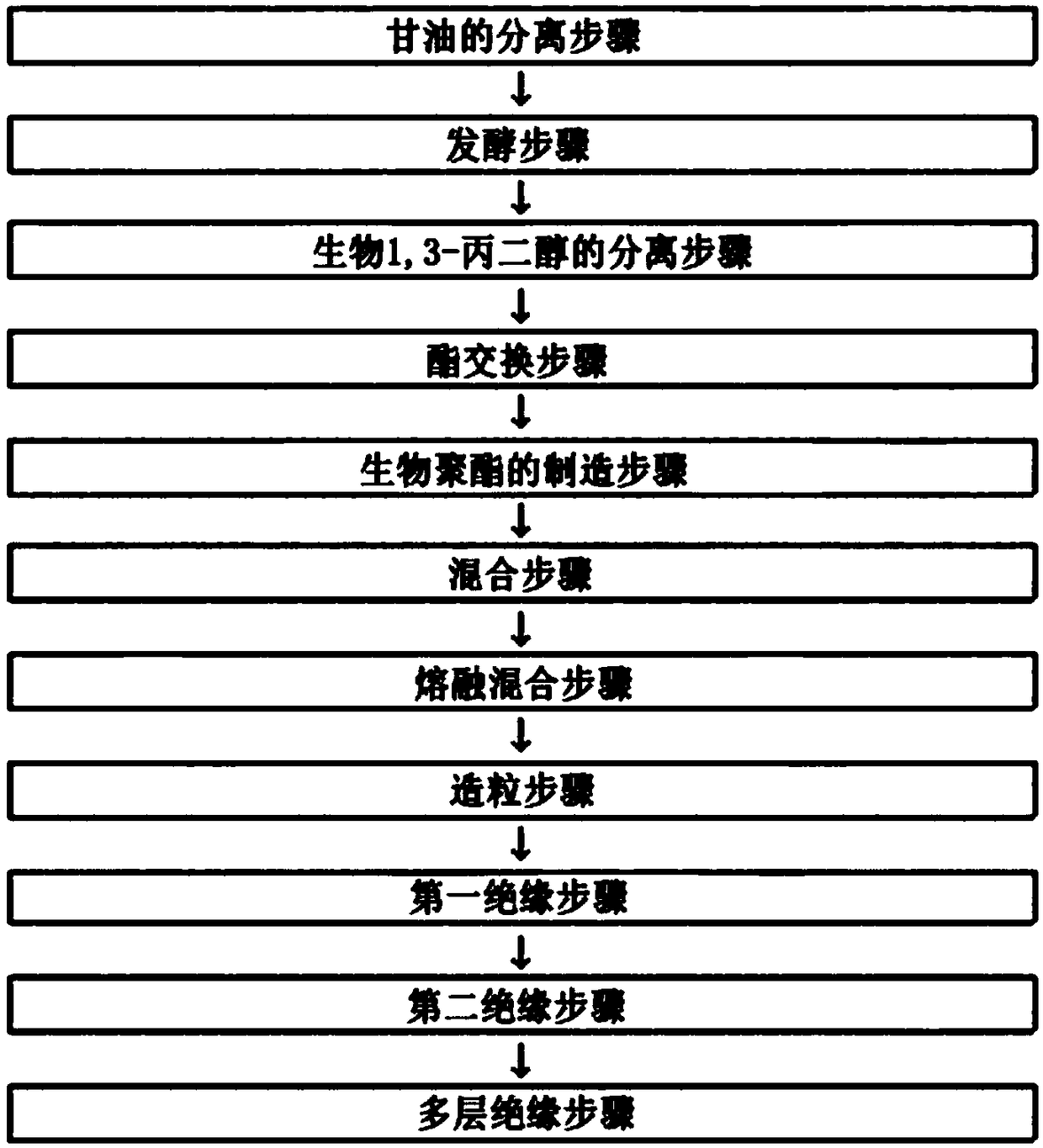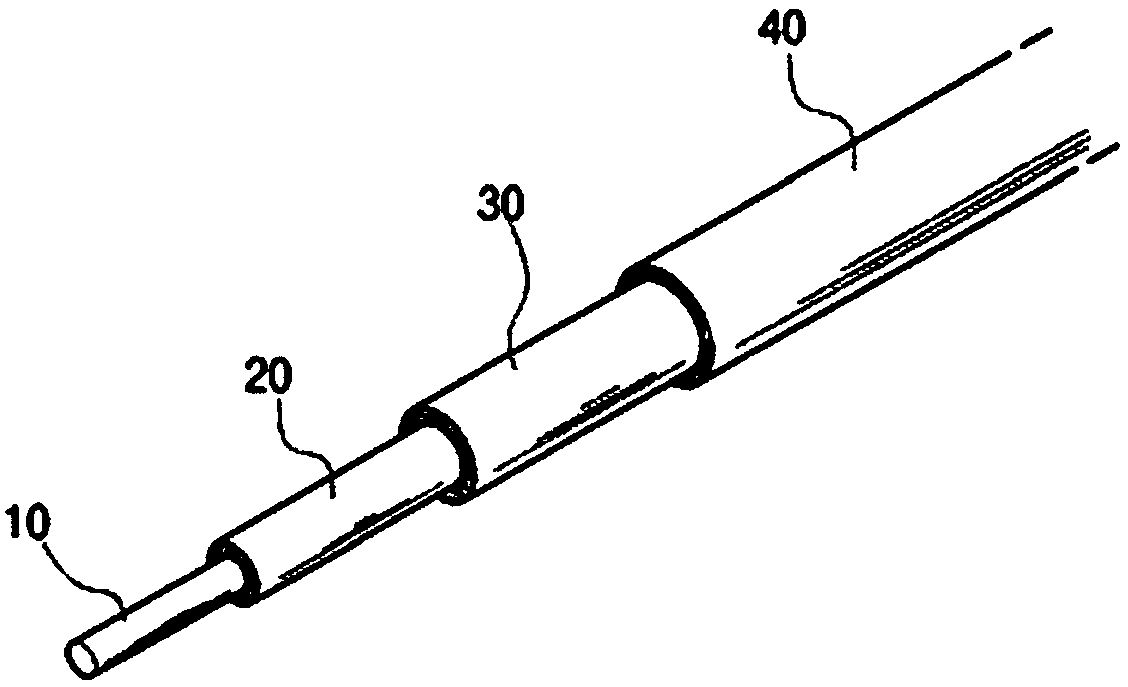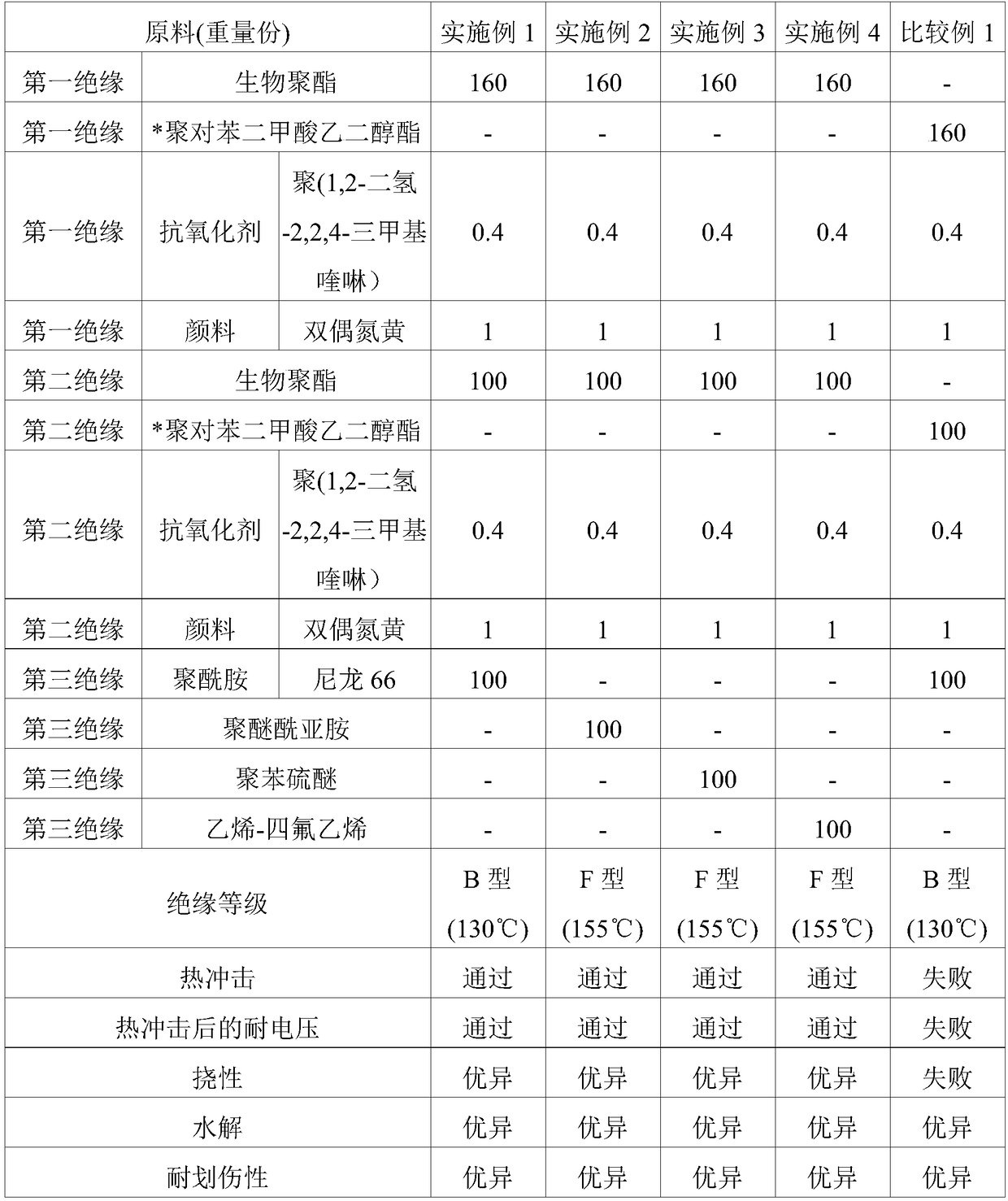Method for manufacturing multilayer insulated electric wire insulated by biopolyester resin, and multilayer insulated electric wire insulated by biopolyester resin, manufactured according thereto
A manufacturing method and technology of bio-polyester, applied in plastic/resin/wax insulators, insulated cables, insulated conductors, etc., can solve problems such as inability to be used as insulated wires, increased emissions, and environmental pollution
- Summary
- Abstract
- Description
- Claims
- Application Information
AI Technical Summary
Problems solved by technology
Method used
Image
Examples
preparation example Construction
[0064]
[0065] From the by-product of biodiesel produced from soybean oil or waste cooking oil of soybean oil, pure glycerol is separated by performing neutralization, precipitation and distillation processes. Then, in the seed incubator, 0.2 parts by weight of antifoaming agent, 12 parts by weight of Klebsiella pneumoniae and 60 parts by weight of nutrient medium were added to 25 parts by weight of glycerol obtained by the separation step, And fermented at 36° C. for 10 days under aerobic conditions to obtain a fermented liquid.
[0066] Bio-1,3 propanediol was isolated and purified from the fermentation broth prepared in the fermentation step. Then 100 parts by weight of dimethyl phthalate, 65 parts by weight of bio-1,3-propanediol prepared in the step of separating bio-1,3-propanediol, and 0.25 parts by weight of tetrabutyl titanate were sequentially It was added to an autoclave reactor equipped with a stirrer, a temperature controller, and a condenser, and reacted at 2...
Embodiment 1 to 4 and comparative example 1
[0068] : Preparation of multilayer insulated electric wire
[0069] A multilayer insulated electric wire insulated by a biopolyester resin was prepared according to the preparation method of the process described below by mixing the components listed in Table 1 below at each mixing ratio using a mixer.
[0070] First, components according to mixing ratios in Table 1 below were sequentially added to a 20 L Henschel mixer and stirred for 5 minutes. The resulting mixture was melt-mixed using a twin-screw extruder at a barrel temperature of 240° C. to 270° C., and the resulting round rod was prepared into biopolyester pellets with a size of about 4 mm to 5 mm.
[0071] The prepared biopolyester pellets and polymer resin pellets were added to a single-screw extruder (screw type: ), under the condition of barrel temperature of 240°C to 280°C, die head temperature of 275°C and rate of 10kg / hour, copper wire (diameter: 0.5mm) was provided with insulation and coating thickness of 30μ...
experiment example
[0074] Thermal Shock Resistance
[0075] Regarding the thermal shock test of the multilayer insulated electric wires according to Examples 1 and 4 and Comparative Example 1, in the case of Type B, after the electric wire was wound 10 times on a metal rod (thickness: 8 mm), it was straightened into Straight line, thermally deteriorated in an oven at 225°C for 30 minutes, then cooled at room temperature for 1 hour, and when the wires do not crack, each wire is considered to have passed the test. In the case of type F, when the electric wire is wound 10 times on a metal rod (thickness: 8mm), straightened into a straight line, thermally deteriorated in an oven at 240°C for 30 minutes, and then cooled at room temperature for 1 hour, the electric wire When no cracks appeared, the individual wires were considered to have passed the test.
[0076] Withstand voltage after thermal shock
[0077] After conducting the thermal shock test, each wire was wrapped with aluminum foil (len...
PUM
| Property | Measurement | Unit |
|---|---|---|
| melting point | aaaaa | aaaaa |
| size | aaaaa | aaaaa |
| melting point | aaaaa | aaaaa |
Abstract
Description
Claims
Application Information
 Login to View More
Login to View More - R&D
- Intellectual Property
- Life Sciences
- Materials
- Tech Scout
- Unparalleled Data Quality
- Higher Quality Content
- 60% Fewer Hallucinations
Browse by: Latest US Patents, China's latest patents, Technical Efficacy Thesaurus, Application Domain, Technology Topic, Popular Technical Reports.
© 2025 PatSnap. All rights reserved.Legal|Privacy policy|Modern Slavery Act Transparency Statement|Sitemap|About US| Contact US: help@patsnap.com



